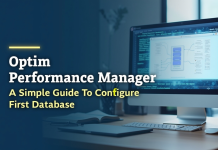In today’s accelerated and increasingly interconnected business environment, the ability to gather, understand, and act on information in real time is no longer just a desirable capability—it has become a fundamental requirement for sustainable growth. Enterprises of all sizes are recognizing that decisions based on outdated, incomplete, or siloed information can put them at a competitive disadvantage. To stay ahead, organizations are turning to advanced real-time aggregation platforms that collect, process, and interpret streams of information the moment events unfold. This shift to real-time data aggregation is redefining how companies forecast trends, respond to market changes, and engage with customers in dynamic industries.
Key Takeaways
- Real-time aggregation is essential for organizations to make informed decisions quickly and stay competitive.
- Unified information streams allow businesses to monitor trends and respond rapidly to market changes or customer feedback.
- Building a scalable aggregation platform requires identifying relevant data sources and using APIs for seamless integration.
- Enterprises using real-time data can optimize operations and seize opportunities faster than competitors, enhancing decision-making.
- Best practices for implementing aggregation systems include prioritizing data quality, investing in adaptable infrastructure, and promoting data literacy.
Table of contents
The Value of Real-Time Data Aggregation
Real-time data aggregation transforms raw, disparate information into a coherent, actionable resource. Traditionally, teams relied on periodic updates, batch reports, or manually compiled data—a process vulnerable to delays, human error, and missed opportunities. Today’s aggregation platforms eliminate these gaps by continuously pulling in information from diverse channels such as market feeds, social media, operational systems, news outlets, customer interactions, and internal analytics tools.
This unified stream of insight empowers organizations to track emerging trends as they develop, respond instantly to shifting market conditions, and tailor strategies that reflect the most accurate possible picture of the business landscape. For example, companies monitoring financial markets can act on sudden volatility; retailers can adjust inventory based on evolving consumer sentiment; and customer support teams can intervene early when brand perception shifts. In each scenario, access to timely insights reduces uncertainty and increases the speed—and quality—of strategic decisions.
How to Build a Scalable Aggregation Platform
Creating a powerful aggregation system starts with choosing the right inputs. Organizations must identify the sources of information most relevant to their operations, whether that includes global newswire feeds, internal systems, customer feedback channels, or competitive intelligence. Once sources are defined, the next step is building seamless data pipelines through modern APIs. APIs enable platforms to ingest structured information from news outlets, social networks, financial data providers, and internal enterprise systems automatically and securely.
Scalability is a critical consideration. A platform must be capable of handling growing data volumes without compromising accuracy or speed. This often requires distributed processing frameworks, cloud-based infrastructure, and automated data quality checks to ensure that insights remain trustworthy even as the system expands. Platforms like CoinFutures, for example, demonstrate how API-driven aggregation can power high-frequency updates and deliver actionable market intelligence to users—illustrating the potential for businesses to maintain a continuous, real-time understanding of trends and market behavior.
Reliability also plays a central role. Redundant systems, strong security protocols, and consistent monitoring help ensure that the aggregation platform remains stable and dependable. In industries such as finance or e-commerce, even small interruptions can lead to lost revenue or missed opportunities, underscoring the importance of building a resilient architecture from the start.
How Real-Time Data Aggregation Supports Enterprise Decision Making
Enterprises that adopt real-time data aggregation gain a competitive advantage across nearly every operational area. Decision-makers no longer need to wait for end-of-day reports or batch analytics to understand performance. Instead, they can see shifts as they happen and adjust strategies instantly. In fast-moving sectors such as logistics, retail, and financial services, real-time data enables companies to optimize operations, reduce risks, and seize opportunities before competitors even recognize them.
For example, supply chain managers can track disruptions the moment they occur and reroute shipments proactively. Marketing teams can adjust campaigns based on immediate audience feedback. Executives can scan global developments and respond to events that could affect their industry. For organizations looking to deepen their capabilities in this space, Gartner offers valuable insights into best practices for real-time analytics, as well as emerging trends that will shape the next generation of enterprise intelligence.
Best Practices for Implementation and Optimization
Successfully implementing a real-time data aggregation system requires more than technology—it demands thoughtful strategy and organizational alignment. To maximize value, businesses should:
- Prioritize data relevance and quality. Focus on sources that align with strategic goals to avoid information overload.
- Invest in adaptable infrastructure. Flexibility ensures the system can evolve with organizational needs.
- Promote data literacy. Equip teams with the skills needed to interpret insights and take confident action.
- Continuously review performance. Regular refinement ensures the system remains efficient, accurate, and aligned with business priorities.
The Future of Aggregation Technologies
Looking ahead, real-time data aggregation will continue to evolve, becoming more predictive, more personalized, and more deeply integrated into enterprise operations. From advanced forecasting models to automated decision engines, organizations will gain new ways to extract value from their information ecosystems. By embracing these tools, businesses position themselves for sustained success in a world where information moves faster than ever—and where those who can understand it in the moment will lead the way.











